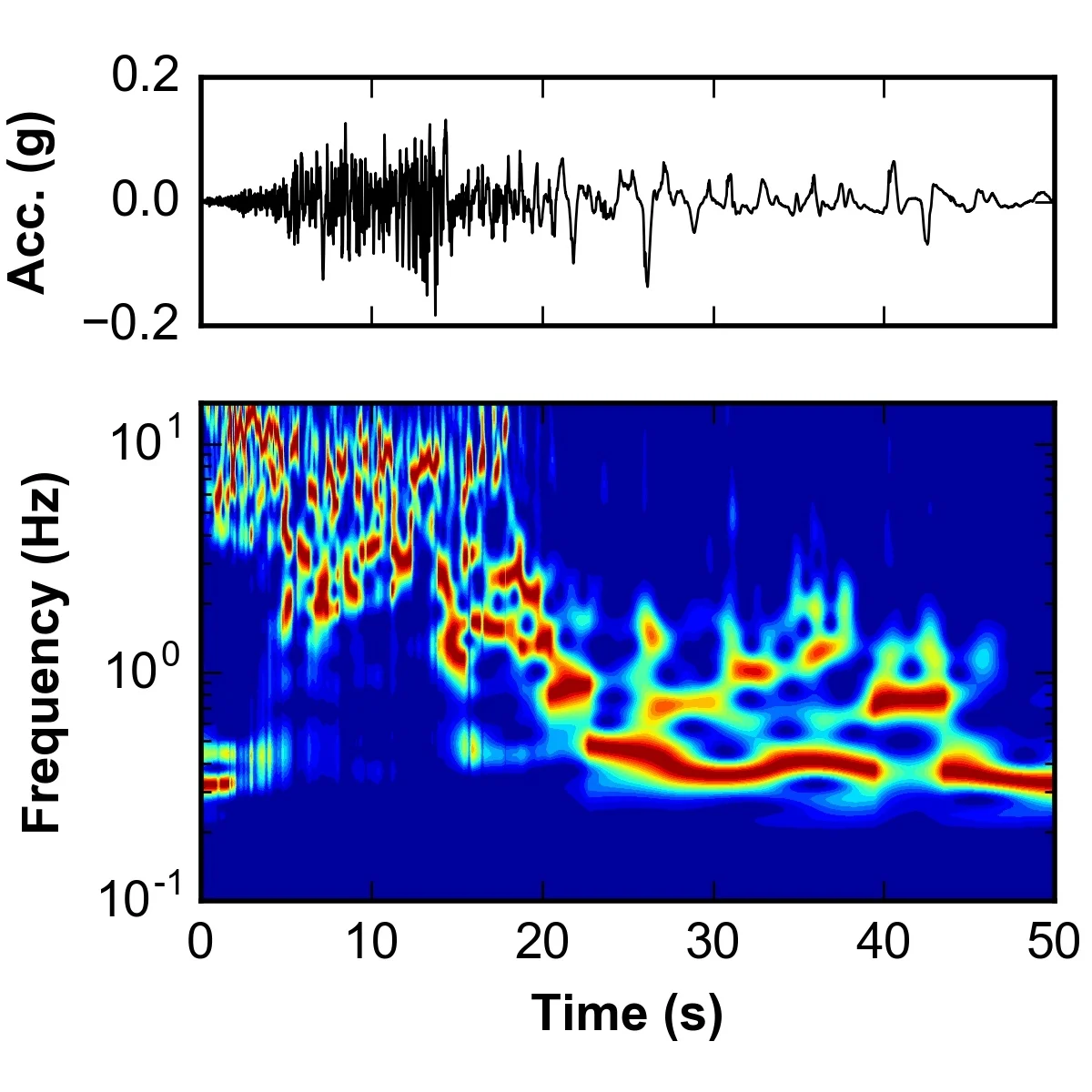PUBLICATIONS
Greenfield Geotechnical is continuously contributing research to the advance the state-of-practice. View the recent research publications here.
LIQUEFACTION
Working with the Pacific Earthquake Engineering Research Center and the University of Washington, Mike researched a procedure to reduce the uncertainty in liquefaction deformation. The key to the procedure is time-frequency analysis, which isolates the soil behavior before and after liquefaction has triggered. The plots above show two examples of time-frequency analyses with recorded ground motions. On the left, the normalized Stockwell power spectrum shows a shift in the frequency of a ground motion. This shift coincides with the time when liquefaction was triggered. On the right, the azimuthal modal frequency shows that the frequency shift due to liquefaction occurred uniformly in all directions. Check out Mike's paper for the 11th National Conference on Earthquake Engineering. It describes ways to reduce uncertainty in liquefaction deformation using time-frequency analyses with recorded ground motions.
UNCERTAINTY, RISK, AND PERFORMANCE-BASED ENGINEERING
Subsurface conditions and future hazards are inherently uncertain. Appropriately accounting for uncertainty can have important implications for foundation and ground improvement design. For example, the figure above on the left shows the probability of an earthquake producing deformations that would cause damage. Simply designing based on the "average" earthquake would leave a significant part of the facility damaged during a very large earthquake.
Risk and performance-based design are statistical principles that help account for the uncertainty in subsurface conditions and future hazards. These principles help design structures that perform well during small, frequent hazards and remain safe during very large, rare hazards. Performance analyses can also justify additional engineering studies, which can ultimately lead to cost savings. The figure above on the right shows that site-specific studies reduce the uncertainty in subsurface conditions. In a performance-based framework, reduced uncertainty reduces the probability of exceeding deformations criteria, ultimately making the foundation design more economical.
With modern statistical tools, like Python's Scipy package, Greenfield Geotechnical has the capability to design structures for an uncertain future. Be ready. Risk and performance-based design are the future of geotechnical and earthquake engineering.



